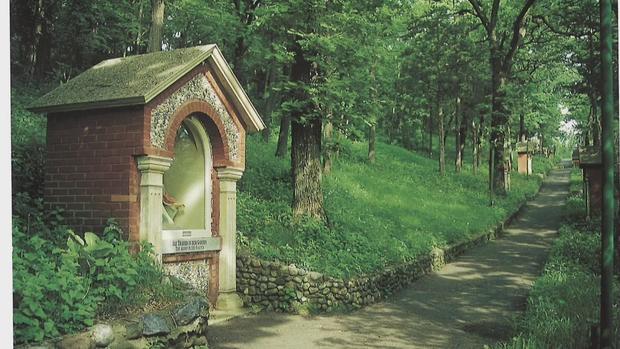New Ulm's Way of the Cross draws visitors of all faiths
NEW ULM, Minn. -- There's a path in Brown County that holds hundreds of feet of history. It's called the "Way of the Cross" and it brings in visitors from around the world.
In this week's Finding Minnesota, John Lauritsen shows us why it's become more than just an Easter time destination.
Not many towns can say they have a 100-foot tall statue watching over them. In New Ulm, Hermann the German is front and center. But he's not the only statue that draws a crowd.
"It's a place of prayer, meditation, and tranquility," Gary Neubauer said.
Neubauer is talking about "Way of the Cross." Fourteen outdoor stations that depict the passion and death of Jesus, but with a unique history of their own.
"The statues that are in each of the stations or niches were basically made in Bavaria at the Bavarian Academy of Art in Munich, Germany," said Neubauer.
They arrived in New Ulm in 1904. From there, an order of nuns called the "Poor Handmaids of Jesus Christ" took over and created the pathway.
The path itself is 700 feet long, and in the middle of it all is a grotto that was built one stone at a time.
The nuns also helped construct each station by hand, pushing wheelbarrows up the hill loaded with brick and cobblestone.
"You see just all the work that was done and the physical labor that was done. And it's quite an accomplishment that they had," said Neubauer.
But over the decades Way of the Cross became overlooked, and as a result, became overgrown.
"In fact, you couldn't walk up the path without ducking under trees. I believe the bishop said you either take care of it or you tear it down," said Earl LaPlante.
So, LaPlante and the Knights of Columbus took over and essentially resurrected the historic pathway. They sent the nearly 120-year-old statues to a company in St. Louis to have them repainted. Then they cleaned up the chapel at the top of the hill.
"It all comes from donations and people are very generous," said LaPlante.
He even helped get the path on the National Register of Historic Places. Since then, the statues get almost as many visitors as Hermann does.
"A lot of them say, 'We aren't Catholic.' And I say, 'It doesn't make any difference.' And there are many other faiths that come here also, just touring," said LaPlante.
Touring not only the stations, but the flowers too.
"We are talking like 500 or 600 flowers," said Denise Richter, volunteer.
Richter will be busy in the spring and summer, planting and maintaining the entire area. Like the stations themselves, the plant life has come a long way.
"When I first came there weren't any flowers up here except one bed of irises," said Richter. "People love it."
The caretakers believe that everyone who comes here gets something different out of their visit. But they also believe all visitors have one thing in common: They leave with a little more peace and a little more serenity.
"Because of all the events happening in the world I think a lot of people come here and will continue to come here for a peace of mind," said LaPlante.
The Way of the Cross was originally the brainchild of Father Alexander Berghold and Sister Flavia, around 1900. It became part of the National Register of Historic Places in 2020 and it's located behind the New Ulm Medical Center.





